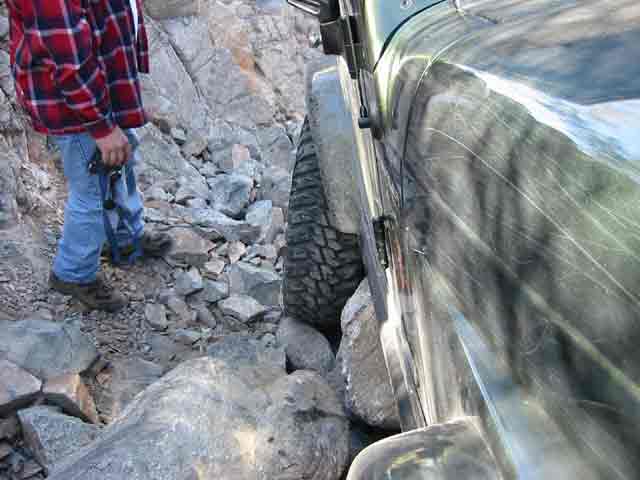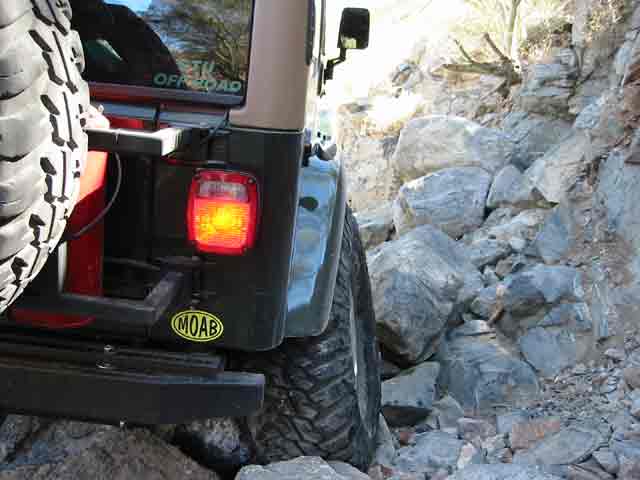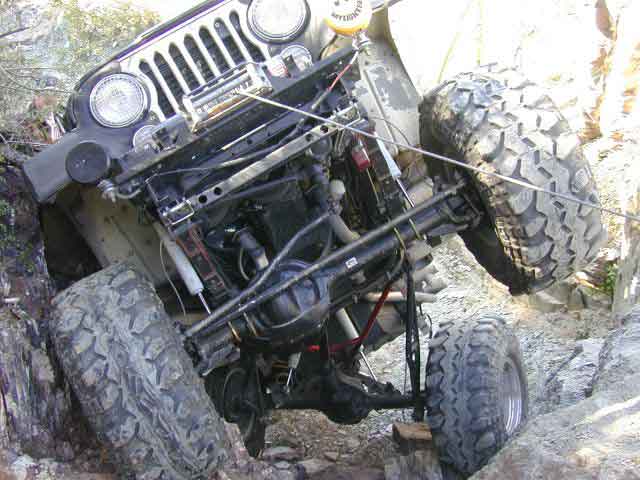So, you are on an obstacle…let’s make that a challenging obstacle….OK….let’s make that a challenging obstacle with some pretty good rocks mixed in with it…..OK….a challenging obstacle with some pretty good rocks mixed in with it that is part way through a not overly tall water fall. In fact, enough rocks so that you really get twisted up while you are in it.
Now, you are keeping an eye on your spotter (you do watch your spotter, right?) and he is giving you the sign to slowly creep forward. As you do, you notice you aren’t quite tracking the line he wants you to take. So, you slip it into reverse and VERY carefully back up a bit, getting those front wheels pointed a bit further towards the left so you can clear that big old rock that is trying to catch your rear diff. OK, looking better now…..you slip back into 1st gear (you are already in low range) and you ever so slightly give it a bit of gas. You feel the Jeep flexing a bit and you think all is going well. Oops….darn it, forgot to pay attention to the spotter again! (Make note to self: Pay attention to spotter at all times while on the obstacle!) He gives you the sign to stop and you repeat the back up and get lined up again process, only to find out that you ended up right where you didn’t want to be, again, and that rock still got your diff! By now, your spotter walks over to tell you that you just aren’t coming up the obstacle the way he wants you to (and he is looking at you like you got 3 eyes and you can’t drive either!)

Welcome to the world of rear steer! You are looking at my passenger rear tire in the above pic. As the driver’s side tire droops, the one in the picture above is pushed up (the control arms make this happen). The driver’s side control arms are effectively shortened through the droop, which pulls the axle forward on that side of the vehicle. The passenger side arm is effectively lengthened by the upward stuff, which pushes the axle rearward. This causes the whole axle to be twisted under the vehicle, causing the effect that we call rear steer. (this nice description was compliments of my friend Jim M)

In case you wanted to see what it looked like from the back side, here it is. I’ve not moved the vehicle (heck, I was sitting there while no less than two people were walking around taking video and snapshots.

One of the local Jeepers, Jay Eller, saw this page and passed along some comments and a few photos about rear steer. This above pic was taken on a local trail that we call Anaconda. Here are his words about it; “I wanted to submit to you a couple of pictures of a buddy of mine with 1/4 eliptic rears, MASSIVE flex, and MAJOR rear steer. Attached are 3 pictures of his flex and examples of his rear steer. These pictures were taken when we ran Anaconda. His rear steer created MAJOR problems on the trail because he couldn’t keep his line. The rest of us in the group with leaf springs and no rear steer conquered these obstacles much easier than him. He actually needed a winch on one obstacle that the rest of us got up with out too much difficulty.” Jay, thanks for the picture….it gives even a better perspective of just how much rear steer can affect the vehicle.
So….now you got something to blame your less than stellar driving skills on when you were just about over that obstacle and your rear axle ended up not being where you had planned on putting it! (see there, I gave you a darn good technical way out of an otherwise embarrassing situation!)
